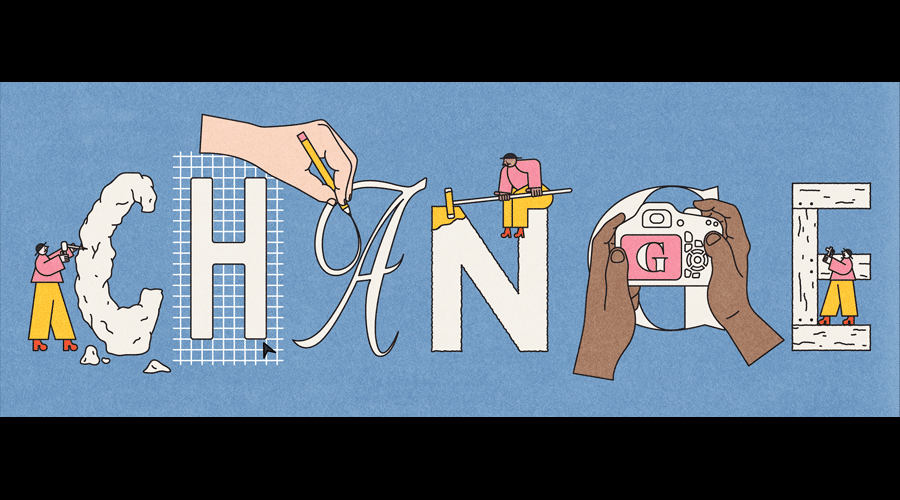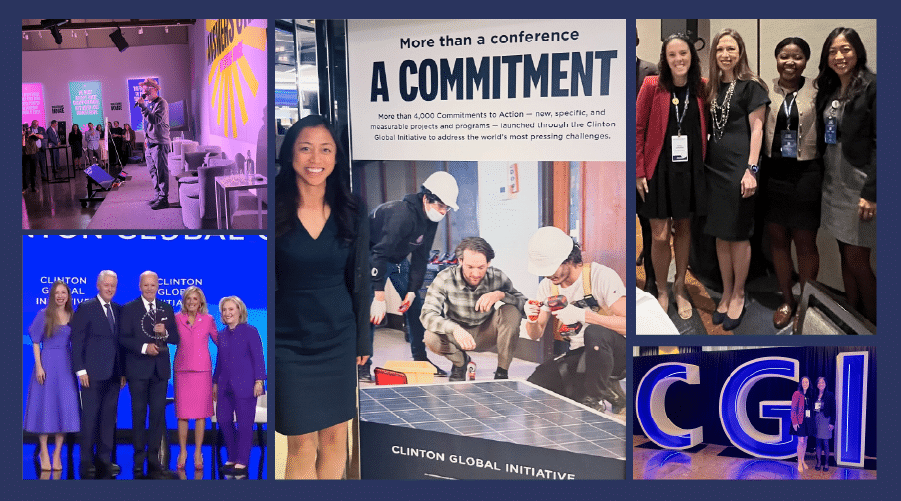We sometimes assume that the more people learn about climate change, the more they’ll turn their concern into concrete action, like switching to an electric vehicle or putting solar panels on their house. But it’s not that simple. Just because we know something, or have a solid scientific understanding of it, doesn’t mean we’re going to do something about it.
In most cases, we first need to go through an inner shift—changing our mindset and/or our personal values—before we (individually or collectively) actually change our behavior. There’s another important way to help shift people’s thinking and spark change that is often overlooked: the arts.
It might sound cliché, but there’s a lot of truth to the saying, “change the culture, change the world.” The arts—from songs and TV shows to visual arts and storytelling—play a crucial role in shaping our consciousness, and artists have long been agents of social change (helping to spur everything from the end of Communism in Eastern Europe to the mainstreaming of LGBTQ culture). On the clean energy front, concepts like the “energy transition” can be abstract, technical, or downright un-inspiring. But as one author put it, the arts can be the “open sesame” to animated discussions and deep questioning, pushing us to engage our emotions and provoking curiosity or outrage.
The power of ideas
Through music, art, books, and other forms of cultural expression, we can introduce ideas, expand our imaginations, and change the broader narrative to support positive social change. As artist Favianna Rodriguez has observed, art is “where people can imagine what change looks and feels like.” Art also inspires action: the most popular artists have the ability to motivate masses of people through their fan bases. In the case of clean energy, engaging the arts and culture can normalize or celebrate actions like installing solar or driving an EV (think about all the Superbowl ads this year that aimed to do exactly that).
Art is “where people can imagine what change looks and feels like.”
Some argue that, for social change movements to be successful, they need to have a strong arts and culture component, or a “cultural strategy.” In other words, the only way we’re going to change politics is by changing the culture (often behind the scenes and over time). Journalist and music critic Jeff Chang has likened political change to a wave: the peak of the wave is the visible, high-profile event or policy win, but in order to reach this peak, many divergent (and often less visible) forces must come together beforehand, gradually building power. Artists and other agents of cultural change help create the conditions that lead to these peaks, shifting and framing public sentiment through a process Rodriguez describes as “rain readying the crops.”
Visions of a better future
Artists are powerful agents of change because they have the flexibility and imagination to push boundaries and give us a sense of what’s possible. They aren’t confined to the world as it is, to existing political frameworks and systems, but can point to the possibilities for a better future. “[W]ithout the inspiration and visions artists provide, we won’t be able to give birth to the life affirming and just civilization we aspire to,” notes the Bioneers website. Because artists work in the idea space (and not just the action space), they’re able to present more complex messages and to “deal with contradictions and gray areas.” Art enables us to imagine desired futures (such as a world running on clean energy) and opens up a positive way of seeing things. It helps us focus on “what we want” and how to get there.
Humor as strategy
Comedy can be a particularly effective means of bringing attention to issues in a non-threatening way. Author Srjda Popovic notes how the use of humor was key to engaging young people in the overthrow of Serbia’s dictatorship in the 1990s, as activists encouraged youth to participate in low-risk performance art that helped alleviate fear while providing a sense of comic relief.
Comedy can be a particularly effective means of bringing attention to issues in a non-threatening way.
In Japan, manga (a term that refers to all kinds of cartooning, comics, and animation) has been used widely to facilitate public discussion of topics from sexuality to climate change. Comics are a powerful medium because they can be a flexible and humorous way to communicate information and develop awareness and empathy. Research has shown that using comics as an educational tool results in two key experiences that can lead to inner transformation: 1) “Aha” moments (or sudden insights into connections between facts, phenomena, problems, and solutions) and 2) laughter, which is often a sign of emerging creativity and insights.
Moving forward
So what does all this mean for the clean energy movement? It means we need to pay closer attention to how art shapes politics, and to think about how to build up a cultural strategy alongside a political one. It means making clean energy come alive through humor and art. It means joining forces to “make waves of political change,” especially in light of the overall decline in support for the arts. It means giving artists the space, time, and resources they require to be creative. And it means hiring artists (and not just policy experts and organizers) to work for social change organizations. As Rodriguez notes, we need to “build the infrastructure and networks needed to help socially engaged artists thrive…while they’re young and excited to shape the world around them.”
Want to see some recent creative projects of ours? Check out these fun videos, this long-form comic, and this children’s book.















